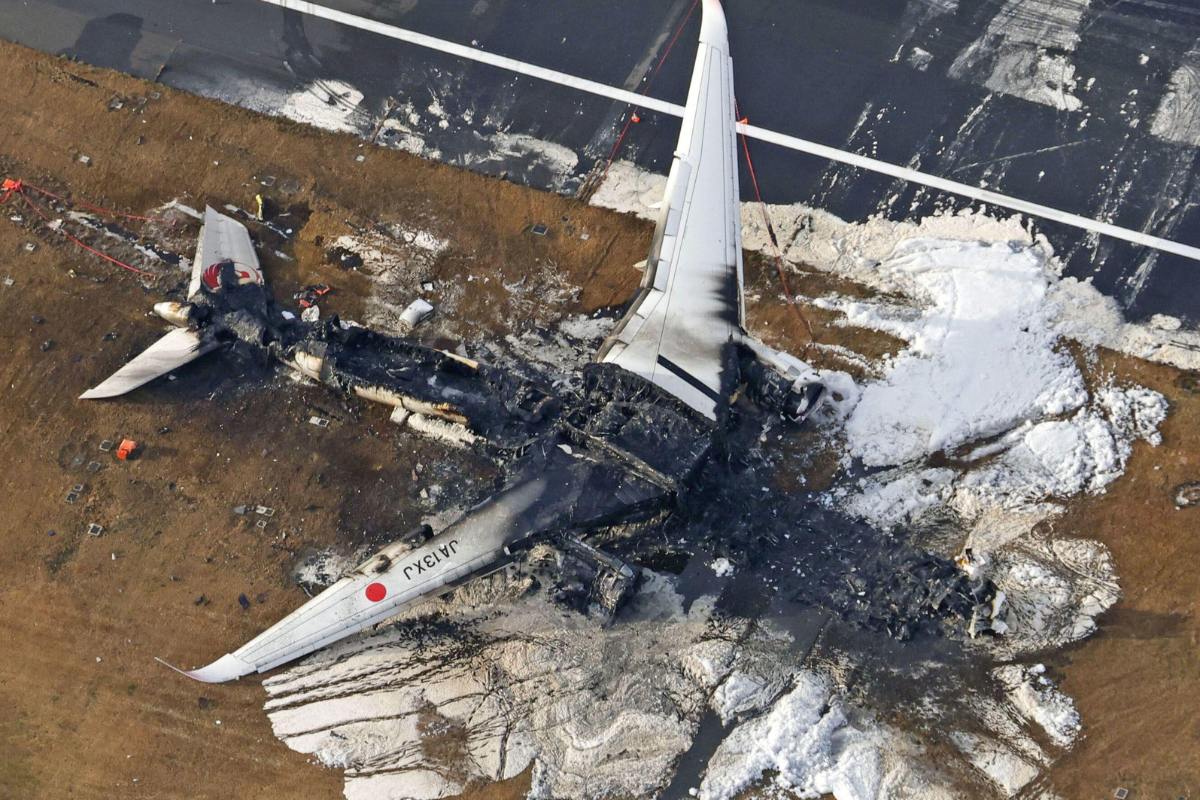
Japan Airlines says the emergency public address system on the Airbus A350-900 that collided with a Coast Guard turboprop aircraft at Tokyo Haneda Airport on Tuesday ‘malfunctioned’ during the evacuation and that flight attendants had to resort to using megaphones or simply shouting as they tried to get 367 passengers off the burning wreck.
Following an uneventful 80-minute flight from Sapporo, the two-year-old Japan Airlines Airbus A350-900 hit a much smaller Coast Guard Dash 8-300 turboprop as it landed on runway 34R at around 5:47 pm on Tuesday evening.
Inside the cabin of Japan Airlines Flight 516 right after collision, passengers remained calm and orderly waiting to escape pic.twitter.com/uLdbvblZ6L
— Unspoken Context (互fo) (@unspokencontext) January 3, 2024
After the JAL airliner burst into flames and eventually came to a stop at the side of the runway, passengers initially heard flight attendants making announcements over the plane’s public address system.
The first announcement implored panicked passengers to “please calm down”, and this was followed by “Do not take your luggage and do not stand up”.
There was, however, no clear order to initiate an evacuation made over the public address system, and some passengers said they only began evacuating when others around them started to stand up and head for the exits.
Video taken inside the darkened cabin moments before the evacuation started, showed flight attendants shouting and attempting to communicate with one another via the interphone system.
In an updated statement, Japan Airlines said: “The aircraft’s announcement system malfunctioned during the evacuation, so cabin crew members conducted instructions using a megaphone and their voices.”
It remains unclear whether the evacuation alarm system also failed.
Of the eight emergency exits on the Airbus A350-900, only three were used during the evacuation because crew members deemed it too dangerous to open the other exits because of the presence of fire and debris.
The JAL statement continued: “Cabin crew members determined safe exits for evacuation, and all passengers and crew members evacuated through three emergency exits.”
Despite only using three of the eight emergency exits, all 379 passengers and crew are believed to have evacuated the aircraft within 90 seconds – the industry certification standard for evacuation (via 50% of available doors).
One passenger suffered bruising during the evacuation, and 13 others requested medical assistance for what the airline described as “physical discomfort”.
Aircraft manufacturer Airbus says it has dispatched a team of specialists to assist investigators in Japan.
The exact cause of the accident is still to be established, but Japanese authorities are examining the possibility that the Coast Guard aircraft taxied onto the runway before being cleared to do so.
Five of the six crewmembers on the Coast Guard aircraft tragically died in the accident, while the Captain managed to escape with serious injuries.
Related
Mateusz Maszczynski honed his skills as an international flight attendant at the most prominent airline in the Middle East and has been flying ever since... most recently for a well known European airline. Matt is passionate about the aviation industry and has become an expert in passenger experience and human-centric stories. Always keeping an ear close to the ground, Matt's industry insights, analysis and news coverage is frequently relied upon by some of the biggest names in journalism.








hats off to the mostly Japanese passengers who are typically well educated and have a habit of following directions and now display rowdy behavior like some countries in Asia.